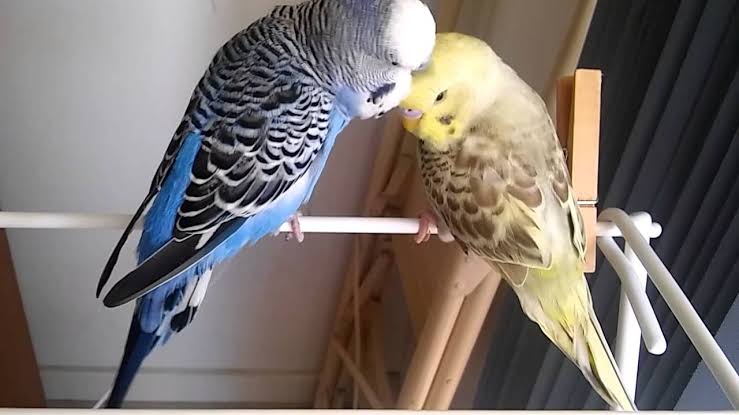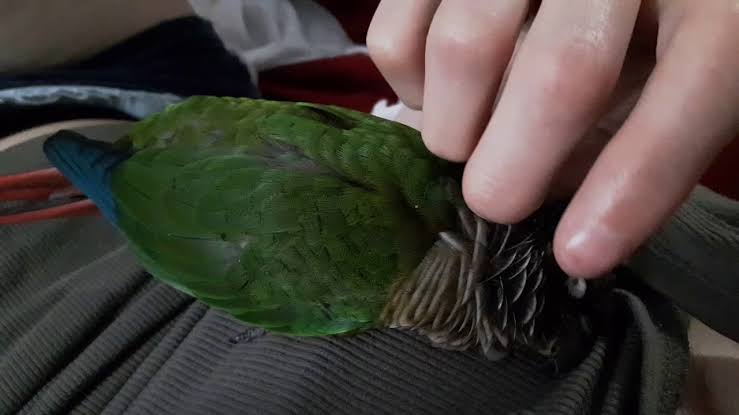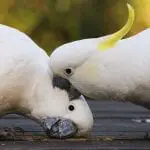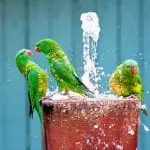Taking care of a pet bird is something that can be quite rewarding as it can potentially provide you with a feathery friend who would always be there to cheer you up or make you smile when you are down or whenever you feel lonely. But the thing you have to consider here is that taking care of a pet bird is a two-way road that requires you to actually be attentive to your bird’s needs if you want it to end up being a happy and caring pet towards you.
So, if you want good bonding time with your bird while also helping it with problems it cannot solve on its own, you have to look at its pin feathers. All types of birds experience pin feathers throughout the course of their lifetime. However, since a pet bird only has you to rely on, you have to make sure that you assist your pet whenever it needs you in relation to its pin feathers.
What are pin feathers?
When your bird is undergoing molting, it molts off its old feathers and will start to grow new ones in place of the older ones. While birds often undergo molting from time to time indefinitely to replace older feathers, this process is much more common in younger birds that need their infant feathers to be replaced with their new feathers as adults or mature birds.
During a molt, pin feathers will begin to grow out of the bird as a sign that it is about to replace its old feathers with new ones. These pin feathers (also called blood feathers) look like pins that are sticking out of the bird’s skin. They are actually feathers that are still developing and are yet to fully transform into the feathers you see in mature birds.
The reason why the pin feathers are called blood feathers is that they are live and actually have a blood supply flowing through it. That is why damaged pin feathers can cause excessive bleeding. But when the blood feather grows longer, the blood supply will begin to flow only near the base of the entire pin as the tip portion of the shaft already contains the “encased” feathers of the bird.
At this point, the mature feather is already there but is wrapped around a sheathe made of keratin, which is similar to the type of protein you can find in the horn of a horned animal such as a goat. The purpose of the sheathe or the casing around the feather is to protect the feathers inside while they are still developing until such time as the bird already knows that it is time to unsheathe its new feathers. This is when preening happens.
What is preening?

When the bird already knows that its pin feathers are ready to be unsheathed, that is when preening starts. Preening is the process where the bird starts to chip the keratin sheathe or coating around its pin feathers to slowly unfurl its new feathers. It does so by using its beak to chip its way through the keratin as the feathers start to expand out of its casing.
However, even after the bird has preened the entire keratin case away to unfurl its new feathers, the feathers are still developing and will still grow. That is why the feather shaft still has a blood supply that feeds the newly unfurled feathers so that they will receive the nutrients they need to grow longer. But when the feathers grow to their mature length, the blood supply will settle at the base of the shaft. This should be the end of the life cycle of the pin feather and of the process of preening.
When they are preening, birds usually do it all by themselves as they are flexible enough to reach almost all of the areas in their bodies. Birds use their beaks to chip off the keratin so that the feathers can unfurl themselves and begin to develop and grow outside of the casing. However, it should be noted that birds, as flexible as they are, cannot reach some feathers. This includes the ones at the top of their heads and the ones near the bottom of its beak.
As such, in nature, most birds rely on other birds to preen feathers they cannot reach. That is why birds are often called social animals and are usually seen living together so that they can help one another when preening. It is somewhat a “you scratch my back, I scratch yours” situation wherein one bird will help preen the pin feathers that the other cannot reach so that the other bird can also do the same for its friend later on when it also undergoes the preening process.
However, if you are keeping only one bird, pin feathers might be a bit problematic for you because of how your bird won’t have a partner to help it during the preening process. To that end, your bird will learn to rely on you, its owner, to help it during such a time so that the pin feathers it cannot reach can begin to grow out of the keratin case surrounding them.
What to do when you are helping your bird with its pin feathers?

Video Source: encrypted-tbn0.gstatic.com
At this point, you probably already know that you should help your bird preen the pin feathers it cannot reach on its own. However, you should take note that you should not do so hastily as you need to wait for a few days before you should start helping your bird because of how sensitive pin feathers are and how dangerous it is to damage a pin feather.
Pin feathers start out as short pin-looking shafts that poke out of the bird’s skin. While they are still short, you should avoid touching them as they can hurt your bird or make it feel uncomfortable. You might even damage them and cause excessive bleeding. It is also important to note that you should also try to make sure that your bird does not touch its small pin feathers during molting when it might feel uncomfortable. As such, provide your bird with toys it can play with and chew so that it won’t have to try to chew its developing pin feathers. You should also try to understand that the bird is undergoing a stressful period and will be quite temperamental during this time.
The entire molting process will only take a few days as the pin feathers are quite quick to reach their mature stage. When they are already mature enough, your bird will know that it can already try to preen the keratin coating off. You may also do the same with the pin feathers it cannot reach. The bird’s head is a good place to start to try to preen pin feathers that have already reached maturity. You can tell that the pin feathers are mature when the keratin coating easily crumbles away with just a slight touch. After that, the new feathers will start to unfurl. This also serves as a good bonding moment between you and your bird as your pet will begin to trust you more if you help it preen its pin feathers. However, you should know that the feather development process does not yet end. The new feathers that have just been unfurled are still growing and are quite sensitive because they still are receiving blood. As such, try to make sure you do not damage these feathers as doing so can cause heavy bleeding.


